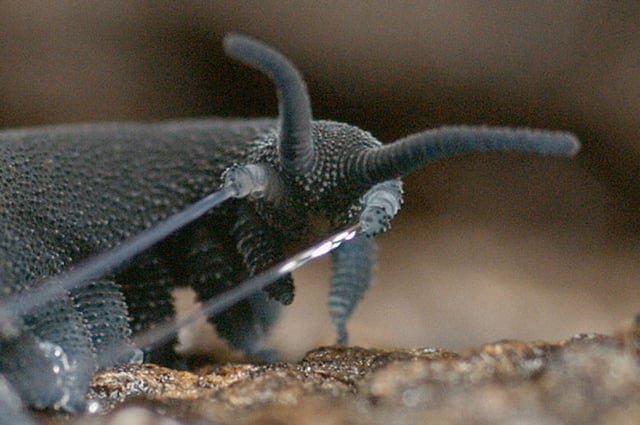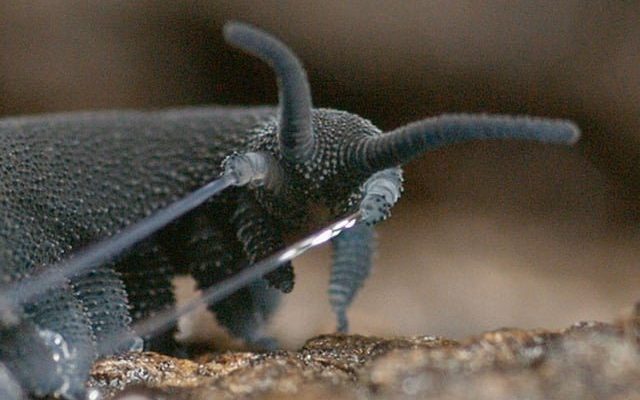
Velvet worms, or *Onychophora*, can be found in tropical and subtropical regions, often hiding under leaf litter or in damp environments. They’re an ancient group of organisms that date back over 500 million years! What sets them apart in the animal kingdom? Their unique hunting techniques make them extraordinary. So grab your favorite beverage, and let’s dive into how these little wonders detect prey in the dark.
The Velvet Worm’s Unique Anatomy
To understand exactly how velvet worms detect prey, we need to look closely at their anatomy. These creatures have a soft, velvety exterior that gives them their name. What you might not realize is that they also have **antennae** and specialized sensory organs that are key to their hunting strategy.
Their antennae are equipped with chemoreceptors, which means they can detect chemicals in the environment. Think of it like how we use our sense of smell to find food. When a velvet worm senses the chemical signals of a nearby prey, it triggers an instinctual response. This sensory adaptation is particularly effective at night when visibility is poor.
Along with their antennae, velvet worms possess a set of **slime glands** that play a significant role in catching their prey. When they sense an unsuspecting victim, they can shoot out a sticky, gooey slime as a trap. If you’ve ever seen a fly stuck in glue, you’ll have a good idea of how effective this method can be!
How Velvet Worms Use Their Senses
Now, you might be wondering exactly how these sensory adaptations work together. Basically, velvet worms rely heavily on their **chemical senses** and tactile feedback to get around, especially in the dark. They have a keen ability to detect vibrations in the ground, which helps them pinpoint the location of their prey.
When a potential meal wanders nearby, a velvet worm will wiggle its body and extend its antennae, almost like it’s “tuning in” to the vibrations. It’s a bit like using your phone to find a signal—if the signal is strong, you’re likely to get clear reception. In this case, the stronger the vibrations, the closer the prey is!
Once they’ve located their target, they use a combination of **slime** and **speed**. These worms can move surprisingly fast for their size, and when they launch that sticky slime, it traps the prey, making it much easier to catch. This combination of sensing and catching is a pretty amazing feat in the animal world.
The Importance of Moist Environments
You might be surprised to learn that velvet worms have a strong preference for moist environments. Why? Because these surroundings help keep their bodies hydrated, which is essential for their survival. But there’s more to it than just comfort. Moist habitats also enhance their ability to detect prey.
In wet conditions, chemicals from potential prey diffuse more easily through the air, allowing velvet worms to pick up on those scents better. Picture trying to smell a cookie baking in an oven. If the kitchen is filled with steam, the scent travels faster and carries more. That’s how moisture can amplify their hunting success!
Additionally, these damp environments often host a variety of small creatures, providing plenty of meal options. It’s a clever survival tactic that aligns with their hunting techniques and habitats, ensuring their evolution continues successfully.
Comparing Hunting Techniques with Other Creatures
When it comes to hunting methods, velvet worms are often compared to other nocturnal hunters. For example, let’s contrast them with spiders. Spiders typically use webs to catch prey, while velvet worms rely on their slime and speed. Both methods are effective, but they cater to different environments and hunting styles.
Hungry spiders often lurk on their webs, waiting for vibrations of trapped insects, while velvet worms actively seek out their meals. This adaptability is crucial in the wild, where being able to respond quickly can mean the difference between a big meal and going hungry.
It’s fascinating to see how different creatures have evolved unique strategies that work for them in their respective habitats. Velvet worms’ method allows them to thrive in the damp, dark corners of the world, revealing a successful niche in the ecosystem.
Why Understanding Velvet Worms Matters
You might be thinking, “Why should I care about velvet worms?” Well, understanding these creatures can provide insights into broader ecological systems. They play an important role as predators in their environments, helping maintain the balance of various species.
By studying velvet worms, scientists can learn more about the adaptations that keep life thriving in dark habitats. Their unique features can inspire biomimicry in technology and design. For example, researchers may look at how these worms use slime to create new materials or adhesives.
Moreover, habitats where these worms thrive are often indicators of healthy ecosystems. Their presence can signal a balanced environment, which is crucial as we face challenges like climate change and habitat destruction.
In Conclusion
Velvet worms might not be the first creatures that come to mind when you think of nighttime hunters, but their methods of detecting prey in the dark are truly fascinating. Through a combination of specialized anatomy, environmental preferences, and effective hunting techniques, they’ve carved out a successful niche for themselves.
The way they navigate the darkness and find food without relying on eyesight opens our minds to the incredible adaptations life can take. So next time you’re exploring the damp corners of a forest or garden, remember the velvet worms hidden beneath the surface, quietly executing their incredible nightly hunts.

